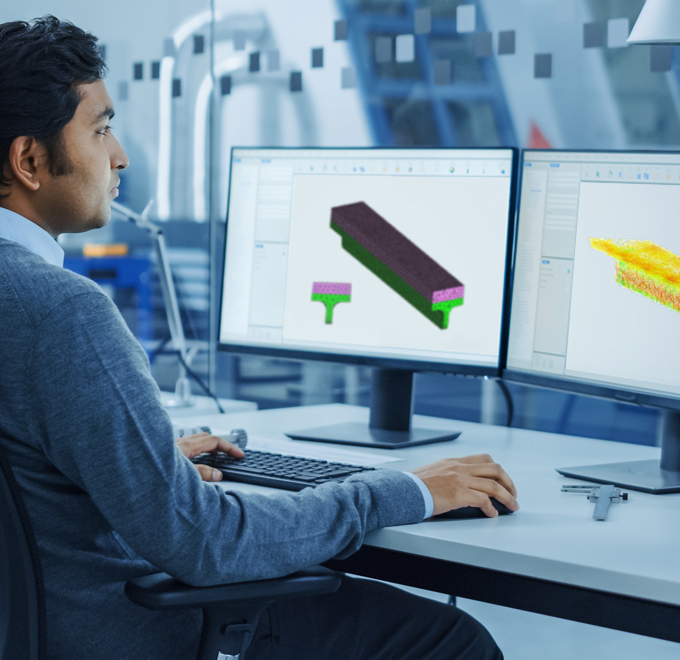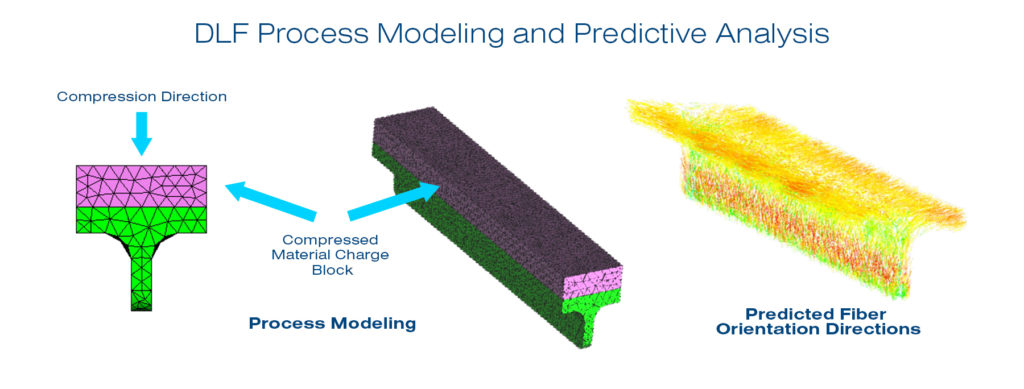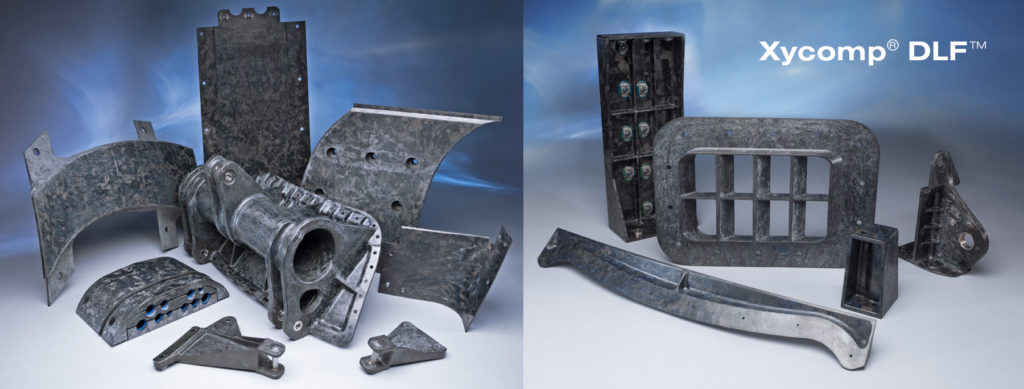How to Predict the Structural Performance of Randomized Composite Components

Aircraft manufacturers across the world are using more and more composite materials instead of traditional metals such as steel and aluminum. What makes composites so appealing is their high strength-to-weight ratio – a comparison of their strength to how much it weighs. Composites aren’t just one of the strongest materials around, but they can be strong without being heavy — exactly what an airplane needs.

Let’s consider one such high-performance composite material that works well for complex and intricate geometries, such as brackets, fairings, and enclosures: Compression molded, random, discontinuous long-fiber (DLF) thermoplastic composite. This material derives its structural properties primarily from fiber reinforcement. The distribution of the discontinuous fibers can be controlled and predicted to improve the structural performance of the molded parts. But it’s not easy to predict performance via computer simulations, especially for discontinuous and randomized material systems.
Models that can predict future behavior of discontinuous and randomized material are in high demand. Travis Mease, Greene Tweed Product Manager, Structural Components says, “From a performance and risk reduction perspective, accurately predicting fiber orientation is crucial. It’s an important design parameter that drives the sizing of our components. Greene Tweed has invested heavily into flow modeling capabilities, so that we can apply fiber orientation tensor values to FE failure analyses.” According to him, this validation by analysis method for DLF composite parts is a risk reduction tool that cuts time and cost associated with tool designs and re-evaluations. The prediction and validation of fiber orientation of DLF composites is complicated due to the complex behavior of flow-induced fiber orientation with high fiber concentration, and reluctance to destructively validate orientation via sectioning and polishing for optical microscopy.

Greene Tweed (GT) understood the importance of evaluating fiber orientation in compression molded DLF composites. GT engineers used a modified Autodesk Moldflow program, customized to predict the fiber orientation in compression molding simulation of DLF parts of various shapes and geometries, such as brackets, structural components, fairings, and enclosures. They then took the flow modeling fiber orientation results for structural finite element analysis to predict the performance of DLF components under different loading conditions. According to Mease, this process generates more accurate results specific to each part, compared to the generic assumptions traditionally used. He explains, “Every part has its own unique material introduction point and geometry, creating similarly unique flow and fiber orientation patterns. The more accurate the flow modeling, the more confidence we have in our stress and failure predictions.”
To validate the results, GT engineers went on to compare predictions from our model with computed tomography (CT) analysis of actual components. After extensive testing, they found quantitative and qualitative agreement between GT’s fiber orientation predictions and experimental CT analysis results for DLF composite parts. The modeling of fiber orientation and flow-molding process showed good predictive capabilities for local variation and distribution of fiber orientation in compression molded DLF thermoplastic composite parts, regardless of size, variety, and shape complexity. And that’s not all. This predictive capability means that damage initiation and failure mode of the part can be visually explained by the fiber orientation prediction.

As a result, Greene Tweed now has the capability to predict how, when, and where a component will fail, and it can also ensure a successful composite optimization effort that includes ample weight savings, cost-cuts, and safety margins. Additionally, by having this prediction capability, we have eliminated the need to do several iterations and thus, Greene Tweed is better positioned to meet our customers’ scheduled deadlines. Please reach out to a Greene Tweed representative to learn more about how a discontinuous thermoplastic solution can stand up to the mechanical load of your application.